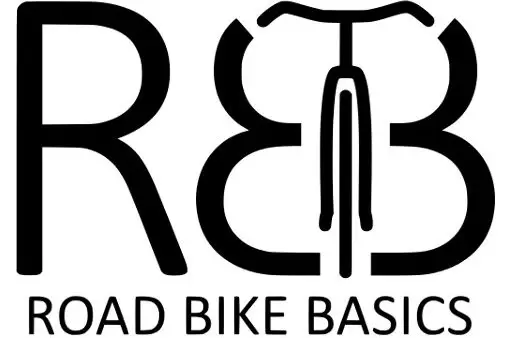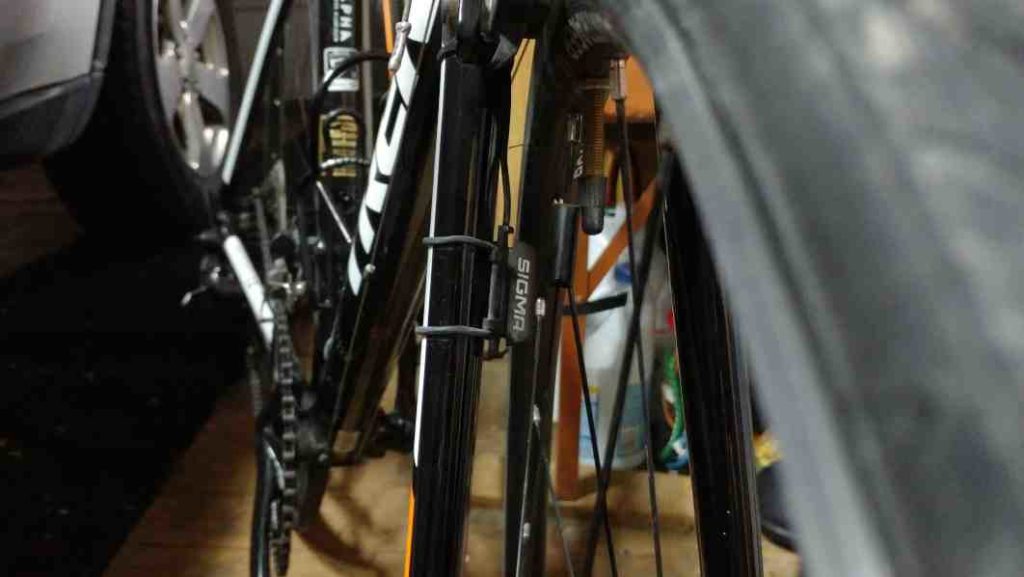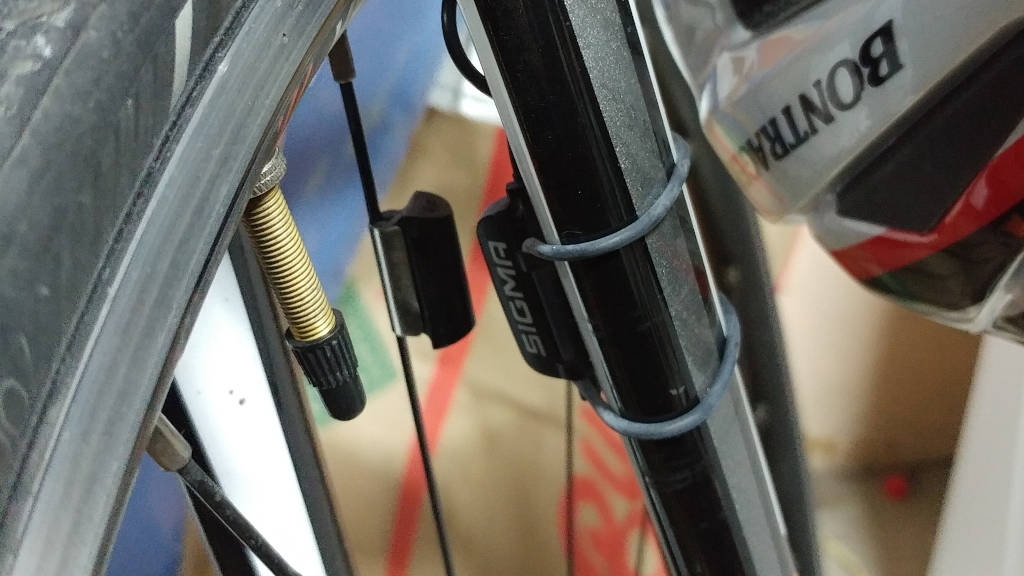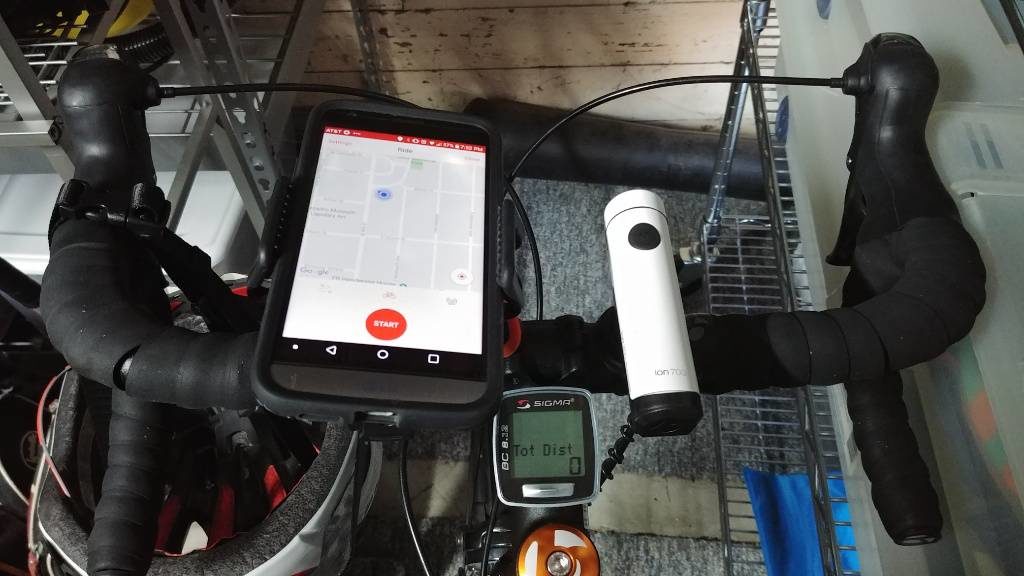I am sure that looking down at a bike computer while on a ride and seeing that it thinks you aren’t moving at all isn’t a unique experience. Better yet is looking down and seeing that it thinks your 20 mile ride was only 5 miles long.
While we can always stop a ride to fix the problem once we notice, an ounce of prevention is worth a pound of cure. So, how do you properly mount and position a bike computer’s sensor to make sure this doesn’t happen?
Whether you pick the front or rear fork, one end of a spoke or the other, it won’t make a big difference in your speed and distance results. However, there are some best practices that are good to follow. If your computer isn’t reading anything at all, check the magnet and the sensor. They should be very close when one passes by the other.
How computer sensors work
The computer senses speed using two components, a magnet, usually mounted to a spoke on a wheel, and a magnet sensor, usually mounted on the front or rear fork. The sensor is designed to detect when the magnetic field around it changes from low to high. The computer will keep track of when the sensor triggers and uses that information to keep track of how fast and how many times the wheel has rotated while you are riding.
Once it knows how the wheel is rotating, it multiplies that by how far the bike moves during one rotation. That gives you how fast the bike is going, and how far you’ve gone. From there the computer can give you other statistics like average speed and average speed.
Front or back wheel
There is no discernible difference between speed and distance readings whether you have your sensor on your front or rear wheel. However, each does lend itself to its own specific scenarios, especially for a wired sensor.
Putting the sensor on the front wheel is good for keeping things simple. It is much easier to route a wire to the front fork than it is to route it to the rear fork. The only problem is that a kit will give you enough wire to go all the way to the rear fork. So, you’ll need to wrap the wire around a cable or your fork enough times to use up the entire distance.
Mounting the sensor on the rear fork allows you to still get speed and distance data while you are using a trainer. However, running the wire for that sensor can be a bit more difficult than if it were on the front fork. You’ll need to run it down either your bottom tube or your top tube, get it to your rear fork, and then make sure you don’t have too much at the end.
Don’t let that keep you from doing it though. Routing the wire to the rear fork isn’t terribly difficult, just more effort than routing it to the front fork.
Towards the rim or the hub
I have found two schools of thought when it comes to this debate. One revolves around duration, and the other around inertia. Neither one is wrong, but I’ll explain why I like the inertia argument a little bit more.
When you put the sensor towards the hub (the middle of the wheel), the magnet on the spoke moves past the sensor much more slowly than it would if it were to be mounted closer to the rim.
Since it will take much longer to pass the sensor, the sensor has a better opportunity to read the changing magnetic field. This results in a more accurate reading, especially at higher speeds.
That argument fails to take into consideration how fast the sensor can react to the magnet, though. Many sensors can read well over 70mph (~110kph), which is well more than even professionals are willing to ride. So, you are better off worrying about something else.
While the wheel is spinning, the inertia of the magnet makes it tend to slip out towards the rim of the wheel. If the magnet is close enough to the hub, that tendency won’t be too strong, but much further out, and it will fly out to the rim. So, you might as well go ahead and mount it as close to the rim as possible. As long as you mount it well, you shouldn’t have too much of a problem, though.
Across from the valve
Most forums where I’ve read up on this topic mention placing the magnet on a spoke that is on the opposite side of the valve. The goal of this is to help keep the wheel balanced. If you put the magnet right by the valve, your wheel could start shaking at higher speeds. I haven’t personally experienced this, but it could happen.
On my bike, I have a reflector across from the valve. So, If I were to follow the advice I just gave you, it would do the opposite of what we are trying to achieve. Just use your best judgment, and try not to make your wheel extra heavy on one side. The easiest way to check is, while you have the wheel off the ground, let it spin freely. If one part of the wheel tends to spin towards the ground, that part is the heaviest.
How to orient the magnet and the sensor
This is the easiest part of positioning. Usually, a sensor is long and narrow and runs in the same direction as the fork. Manufacturers don’t frequently give you options on how it is oriented.
The magnets that I’ve dealt with, on the other hand, can be easily rotated around the spoke. The two main styles are either pressure fit or a screw fit. So, just rotated the magnet till it is facing the sensor, and tighten it into place.
Make sure that when they pass by each other, they are getting as close to each other as possible. Shoot for less than a quarter of an inch or less than one centimeter. As long as they are close to one another, they should be able to get a good reading.
To check your reading, lift that particular tire off the ground. Then, while you look at the computer’s screen, spin the wheel and see if your computer updates.
If you are checking your rear wheel, make sure to watch out for your pedals. If you spin the wheel
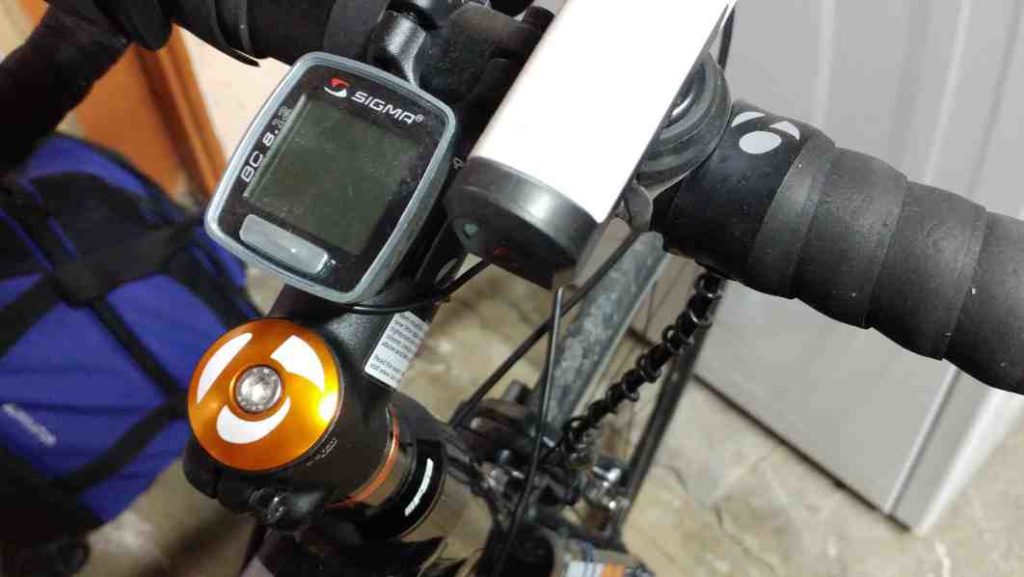
Quick tips for routing the wire
Make sure that you have enough slack in the wire as it is coming off of the handlebars so that you can turn without putting tension on the wire. I have seen people try and run wires without taking this into consideration, and it would break the wire or keep them being able to turn their handlebars correctly.
Keep the wire close to the frame. The further off it is, the more likely it is to catch on something. That could be something as innocuous as air, or as bad as a spoke, your pants, or stick. That means it is more likely to slowly wear through the wire, and shorten its lifespan. It’s worth spending a little more time putting the care and effort into routing the wire around a tube one more time just to get the distance right.
What to do if the computer STILL isn’t reading
Almost every time, the computer not showing a reading will mean that the magnet isn’t getting close enough to the sensor. For me, the magnet can rotate around the spoke when I don’t want it to. You’ll also need to check to make sure it hasn’t migrated up or down the spoke, or just completely flown off your bike.
If the display is powered on, but still isn’t reading your speed, you might need to take it to a bike shop to get it repaired. Chances are that either the wire has come loose or the sensor has broken. This isn’t very likely to happen on a normal ride. So, if you had an accident recently, that might have put your computer out of commission for the time being.
Otherwise, your battery could be dead. They don’t last forever, and the more you ride, the sooner it will need to be replaced. Thankfully, the computer will either run on cheap batteries that you can get at most stores or online, or the computer will be rechargeable. Fortunately, replacing the battery, or throwing the computer on a charger overnight is pretty easy.
I hope that all of this will help you understand what is going on with your bike computer sensor. I also hope that you’ll be able to place it so you can be confident in the information that you are recording.
Thanks for being here!
I make content that empowers people to enjoy riding their bikes.
Are you interested in learning more about that?
Here are some hand
